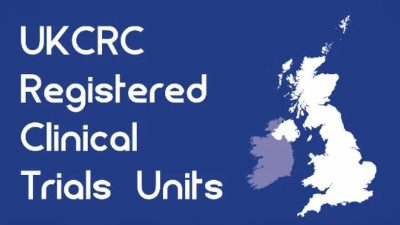
- Cancer
- Trials closed
BUBBLE
MicroBubble detection and Ultrasound guided Biopsy of axillary Lymph nodes in patients with Early breast cancer
Research summary
Patients with newly diagnosed invasive breast cancer require their axillary lymph node status to be histologically established. 28,786 axillary staging procedures were performed in the UK in 2007. Standard practice is to perform this surgically with sentinel lymph node biopsy (SLNB) and 16,809 SLNBs were performed in the UK in 2007. Those patients whose nodes are free of disease require no further treatment. However, patients with metastatic deposits usually undergo a second operation to remove all their remaining nodes [axillary lymph node dissection (ALND)]. If such patients can have their lymph node metastases diagnosed pre-operatively they will be spared an (unnecessary) preliminary SLNB operation. Consequently, all patients eligible for SLNB now undergo pre-operative ultrasound of the axilla and needle biopsy of any morphologically abnormal node. This enables 40% of patients with lymph node metastases to be diagnosed pre-operatively and these patients are saved an unnecessary SLNB operation. However, 60% of patients with lymph node metastases are still currently undiagnosed. Previous research undertaken by ourselves has shown that 45% of such false negative assessment is due to the radiologist biopsying a node that is not the SLN and 55% is due to inadequate sampling of a correctly identified SLN i.e. both better targeting of the SLN and better sampling of the SLN once found is required to improve pre-operative diagnosis and further reduce unnecessary SLNB.
Some initial work from Japan and the UK has shown that the SLN can be identified in 90% of patients by injection of an ultrasound contrast agent of microbubbles into the retroarealor region (equivalent of the surgeon injecting patent blue dye to identify the SLN at operation). There has yet to be any reported work on attempting to percutaneously remove the SLN once identified by microbubbles. It is hoped that the combination of more sophisticated targeting of the SLN using (SonoVue®) and more efficient sampling by removing the node percutaneously, will result in significantly greater detection of lymph node metastases and a consequent reduction in unnecessary SLNB.
The majority of patients with lymph node metastases are not diagnosed pre-operatively by current diagnostic techniques. Improved targeting and increased sampling volume will increase sensitivity of ultrasound guided axillary lymph node biopsy leading to an improvement in pre-operative diagnosis and a reduction in the number of unnecessary surgical Sentinel Lymph Node Biopsies. This is to be an open, non-randomised study of 2 parts. The primary endpoint is the incidence of lymph node metastases diagnosed on pre-operative biopsy using the microbubble guided biopsy technique.
A total of approximately 196 patients will be recruited who are scheduled to undergo surgical sentinel lymph node biopsy. This will be a single centre study performed by members of the Cambridge Breast Unit in Addenbrooke’s Hospital, Cambridge. Approximately 196 patients scheduled to undergo routine SLNB, as part of their surgical management of early breast cancer. Approximately 30 patients will participate in part 1 of the trial with a further 166 patient approximately participating in part 2 of the trial.
Main inclusion criteria
To be included in the trial the patient must have:
- Biopsy proven invasive breast cancer
- Female patients
- Aged 18 years and over
- Sentinel Lymph Node Biopsy recommended as part of their breast cancer management.
Main exclusion criteria
The presence of any of the following will preclude patient inclusion:
- unable to provide written informed consent
- history of previous ipsilateral breast cancer treatment
- prior ipsilateral axillary surgery
- Pregnant or lactating women
- Patients with known hypersensitivity to sulphur hexafluoride
- Patients with known adult respiratory distress syndrome.
- Patients with recent acute coronary syndrome or clinically unstable ischaemic cardiac disease (including: evolving or ongoing myocardial infarction, typical angina at rest within last 7 days, significant worsening of cardiac symptoms within last 7 days, recent coronary artery intervention or other factors suggesting clinical instability (for example, recent deterioration of ECG, laboratory or clinical findings), acute cardiac failure, or severe rhythm disorders.
- Patients with known right-to-left shunts, severe pulmonary hypertension (pulmonary artery pressure >90 mmHg), uncontrolled systemic hypertension.
Funders and sponsors
Chief investigator
Mr Peter Britton






